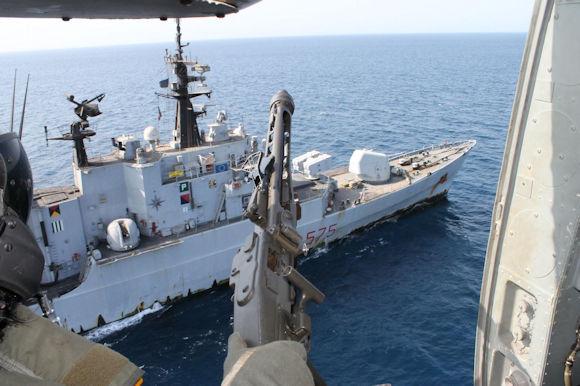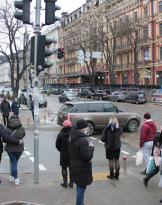15.00 Hours - Bosaso: "Whoever has tried to fly, walks looking at the sky because he was there and there he wants to stay" (Leonardo Da Vinci).
When Commander Aletta informed me at lunch that I was going to fly to be able to document an ISR activity (intelligence surveillance and reconnaissance), I thought he was joking. I believed only when, he specified that, at least an hour before I would have to be found in COC (combat operations center) for the briefing ISR. At the end, I would have to go to the hangar for the safety briefing in flight by the SEZELICOT staff (helicopter section).
Any doubts are gone when I saw the AB 212 ready for takeoff on the ship's flight deck.
The ISR is a monitoring activity of suspicious and patrolling activities. The Dutch commander, René Luyckx, always carries out “in turn” on the part of the naval units present in the operating theater.
We are off the coast of Somalia.
During the briefing ISR in COC, I realize the importance of this activity: the acquisition of information elements for the location and identification of any "Pirate action Group" (PAG).
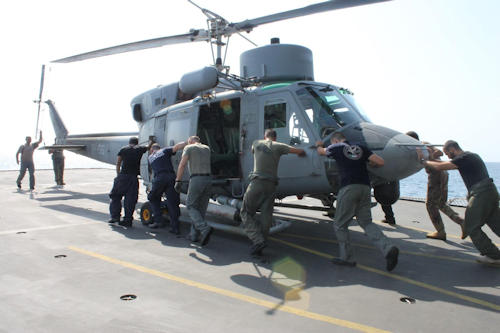
The acquisition of video and photographic material is possible, thanks to the ISR activity with the use of the AB 212 of the Navy
By "intelligence" we mean the analysis of the previous images, collected with on-board devices and sensors (radar, GE or on-board intelligence or better said electronic warfare). It can be observed whether in the areas in question there are centering and / or emptying of villages dedicated to the use of human and non-human resources useful for piracy.
Surveillance allows you to monitor the movements of suspicious vessels (thin boats and mother ships). With the "reconnaissance" a direct verification is carried out by means of an "overflight" on the spot.
During the briefing ISR in COC, the instructions given by GE staff to SEZELICOT pilots, are to monitor several villages towards Bosaso.
Bosaso was one of the "hub" cities of piracy in the Gulf of Aden. And it is here that, during the previous ISR activity, some suspected "dhows" have been identified. These usually travel with tow boats and carry fuel cans with them. We need to understand if they can be used for the fuel trade or they can only be used for long journeys, round-trip, from the Somali coasts.
The GE officer underlines the importance of noticing any "traces" left on the coasts, by skiff (barchini, ed), which come into the sea.
After briefing ISR, I leave the COC, greeted the bridge team and head to the hangar. I meet the staff of SEZELICOT, that is the 2 ° and the 4 ° helicopter group of the Navy, coming respectively from Catania and from Grottaglie (Ta).
SEZELICOT is the "eye" of a ship Euro in Mission Atalanta.
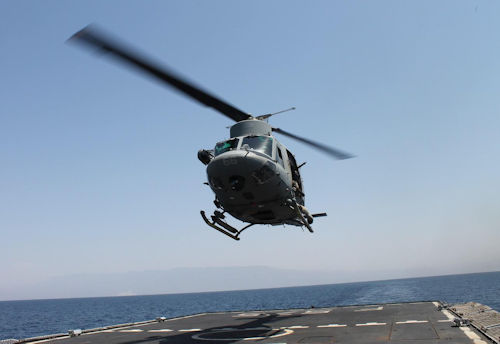 The flight operator, Giuseppe Scalia, helps me to wear the inflatable lifejacket and ear muffs.
The flight operator, Giuseppe Scalia, helps me to wear the inflatable lifejacket and ear muffs.
Piloting the AB 212 is the TV Valeria Cucci, belonging to the 4th helicopter group Marina Militare di Grottaglie.
At his side the co-pilot, the TV Luigi Tanzella.
We proceed with the pre-flight checks. An operator accompanies me to AB 212. We move quickly from the hangar to the helicopter by bowing our heads.
The sergeant, Salvatore Savio Rannisi, of the 4 group of helicopters, which dealt with mine safety briefing in flight, helps me settle on board. He loudly repeats the safety and emergency procedures.
Lieutenant Cucci, turning slightly, smiles at me and asks "in the headphones" if I'm ready to fly. A few moments more and the AB 212 takes off.
We move away from “Euro mom”, as the pilots often affectionately call the ship.
We head towards Bosaso. The directives are to fly over part of the coast and the port of the city.
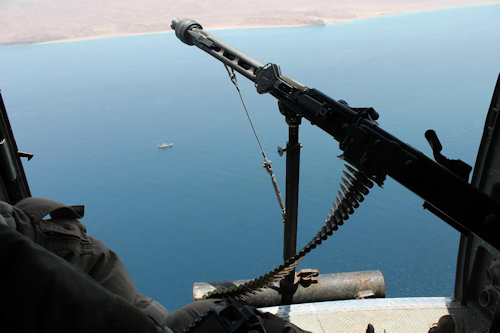 The ocean we fly over has colors ranging from blue to crystalline green. Not far away, the Somali coast frames those waters. Landscapes harassed by the exploitation of those who use them as a basis for illegal activities.
The ocean we fly over has colors ranging from blue to crystalline green. Not far away, the Somali coast frames those waters. Landscapes harassed by the exploitation of those who use them as a basis for illegal activities.
Small ruined buildings and skeletons of abandoned cars can be seen. Tiny, from above.
The pilots make some turns on boats that are photographed and recorded by the "flir" (forward looking infrared) onboard. The same images will be compared with the previous ones to analyze the new and old settlements and predict new possible piracy activities.
To my left is the specialist of a Sezelicot, the flight operator Francesco Cecere. On my right, instead, Sergeant Rannisi, a radar operator.
Both are next to the machine guns on board.
In the event that during the ISR activity a merchant ship is identified, its nationality can be verified through the IMO number (international maritime organization), a sort of plaque "aft" of the same merchant.
I am impressed and intrigued by the meticulous and precise ability of the crew to carefully observe each area of the area at a considerable overflight height.
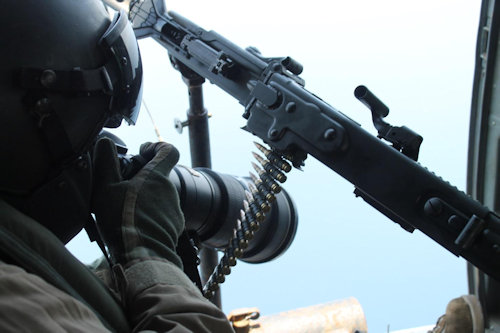
They meticulously describe each boat: fuel drums, fishing nets, number of passengers, etc. They do not underestimate the possibility of seeing possible indications of illegal activities such as the presence of long ladders and / or grapples (useful for boarding) or a "certain number" of fuel drums needed to travel long stretches of sea.
Not impossible, it could be the presence of Kalashnikov gunmen or RPG-7 rocket launchers.
The AB 212, after an hour of intense mission, is ready to return. A few minutes of flight and the "Euro mom" reappears.
The assistance staff can be seen on the flight deck. Each is in its place. The speed of the wind and the roll of the ship are communicated via radio. The AB 212 gently returns to the flight deck.
After a new smile that seems to ask if everything is ok, Lieutenant Cucci draws up the end of mission report.
I get off the aircraft and walk away I reflect proudly on the high professionalism of the men and women who take part in this mission. People who for months and months perform delicate tasks, sometimes risky, far from their loved ones. Too often quietly and in the shadows.
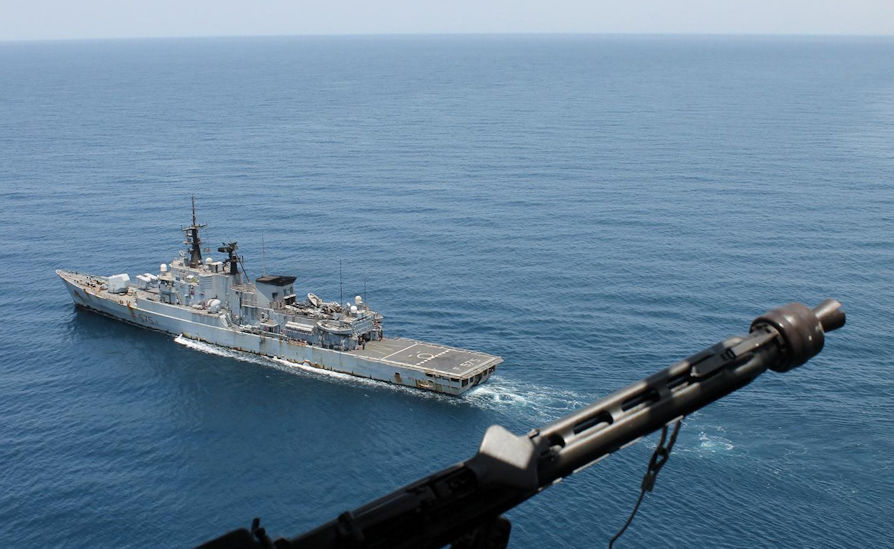
(photo of the author)

